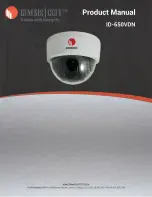
5. Select the type of build you want to create (Debug or Release) from the project
configuration drop-down selector menu near the top of the MS Visual Studio window. The
default configuration when you first download and start MS Visual Studio will be ‘Debug’.
6. Build this solution (Build -> Build solution).
7. Once successfully built, open the ampcap example solution (File -> Open ->
Project/Solution) which will be located in the SDK folder e.g.:
C:\Program Files\Microsoft SDKs\Windows\v7.1\Samples\multimedia\
directshow\capture\amcap
8. Select the type of build you want to create (Debug or Release - use the same one you
used for building the baseclasses above) then build this solution (Build -> Build solution)
9. If it worked you will have a working copy of AmCap.exe in the location appropriate to
the type of build you made (debug or release) e.g. in
C:\Program Files\Microsoft SDKs\Windows\v7.1\Samples\multimedia\
directshow\capture\amcap\x64\Debug\AmCap.exe
or
C:\Program Files\Microsoft SDKs\Windows\v7.1\Samples\multimedia\
directshow\capture\amcap\x64\Release\AmCap.exe
10. Connect your AF51 camera to the computer then double-click the AmCap.exe file.
Webcamoid for macOS, Android and MS Windows
Webcamoid is free and open source software for Linux, Android, macOS and Windows by
Gonzalo Exequiel Pedone and released under the terms of the GNU GPL v.3.
The MS Windows version of this software can control most
but not all
the functions of
the AF51. In v.9 of this software (the latest version tested when writing this manual) there
is no separate control for ‘
Exposure, Dynamic Framerate
’ or for the ‘
Power Line
Frequency’
. Other controls of the camera are present and work as expected. Note this
OptArc AF51 Camera Page 47 of 99 User Guide v1.02
















































